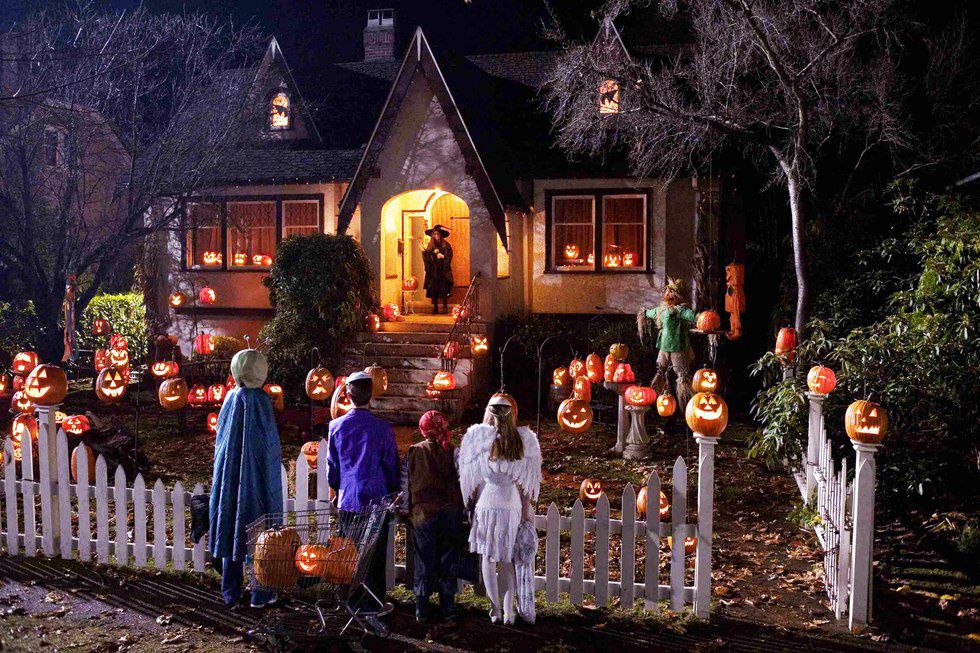Ahh, October, the month I wait for all year long so we can finally celebrate one of my favorite holidays -- Halloween! We all already know that fall is my favorite season, and Halloween is a huge factor in that. A holiday full of tricks, treats, costumes, candy, and delicious pumpkin everything is more than I've ever wished for in a single holiday. But how did a holiday that began as a day to honor those who have passed become a holiday about dressing in skimpy costumes and getting free candy? It's a long story, so let's start at the beginning.
Recommended for you
Historians generally agree that Halloween began with the ancient Celtic festival of Samhain, a holiday that would mark the transition from summer to winter. It would occur on October 31, as their new year began the next day, on November 1. Samhain was also celebrated because it was believed that was the night that ghosts returned back from the dead to cause trouble in the living world. In addition to causing a ton of mayhem, though, the Celts also strongly believed that having the spirits around would help their priests make more accurate predictions about the future, and make their prophecies come true. For the Celts, this was incredibly important, as most of their decisions in life depended heavily on these prophecies. To help celebrate Samhain, the people would gather to burn crops and animals as sacrifices to their deities, and the Celts often wore costumes to this event.
Fast forward to the Roman takeover of what would later become modern-day Ireland, and the Roman festivals were combined with the Celtic ones to more closely resemble what would later become known as Halloween. The Romans took their holiday, Feralia, a day to honor the dead, and combined that with Samhain. A few hundred years later, the spread of Christianity renamed the holiday All Souls' Day, later to be renamed All Saints' Day. All Souls' Day was pretty similar to the original holiday of Samhain, as it included big bonfires, dressing up in costumes, and parades. This celebration was also called All-hallows or All-hallowmas, which comes from the Middle English "Alholowmesse", meaning All Saints' Day; it was soon renamed All-hallows Eve, and then, eventually, our familiarly named Halloween.
By the late 19th century, Halloween had spread to the United States and became popularized with the Irish Potato Famine, as a large influx of Irish immigrants came to America and brought their traditions with them. Influenced by these new traditions, Americans began dressing up in costume and going from house to house asking for food or money -- a tradition that soon became known as trick-or-treating.
Trick-or-treating didn't originally begin as a candy-themed tradition, though. When it was just starting out, children were usually given a random assortment of food, consisting of everything from nuts and fruits to pieces of cake and even homemade cookies. By the late 1950's, though, candy manufacturers began to see how they could profit from this great holiday and joined in on the fun. It wasn't until the 1970's, though, that candy companies realized just how profitable this holiday could be for them. With the unrest that came from parents not wanting their children accepting unwrapped candy from strangers (I mean, can you blame them?), the candy companies began releasing their products in individually, commercially wrapped option. Their sales began to sky-rocket, and candy and Halloween have been intimately connected ever since.
What about the evolution of our costumes, though? How did Halloween go from dressing up in animal skins to wearing skin-tight suits and bunny ears? It turns out that Halloween was more about sexy costumes before it was even about candy. Because everyone used to be separated by gender, public holidays were the only days when they were allowed to go out there and flirt, and what you wore had a pretty big impact on that. So when exactly did the idea for sexy costumes become the norm? "The historical precedent would be the sexy costumes at masquerade balls, which were wildly popular from the 18th and 19th century on," says Valerie Steele, director of the Museum at FIT. "Respectable women would wear pantaloons or short skirts and milkmaid outfits when they went to costume parties. At the masquerade parties in London, you had costumes with a degree of body exposure. You also had artists’ balls—in Paris especially—where you had revealing costumes and some nudity." As soon as these costumes became more commercialized (think the 1970's -- the sexual revolution!), Halloween took on a completely different look. The National Retail Federation reports that Americans will spend a total of $2.5 billion on Halloween costumes this year, with $1.2 billion of that just being adult costumes. (In case you were wondering, $950 million on children's costumes, and $350 million on costumes for their pets!)
Well, there you have it, folks! The long and rich history of Halloween is incredible, and I know that this isn't the end of its ever-developing culture. As we change, our holidays change, and Halloween will continue to change with us. My only hope is that my favorite traditions of pumpkin-carving and free candy will never go away, because isn't that what Halloween is all about?





















